- Expert advice/
- Invites & paper/
- Day-of paper/
- What to Write on Wedding Place Cards
- Day-of paper
What to Write on Wedding Place Cards
Everything you need to know about writing wedding place cards so that you and your guests can celebrate stress-free!
Last updated July 1, 2025
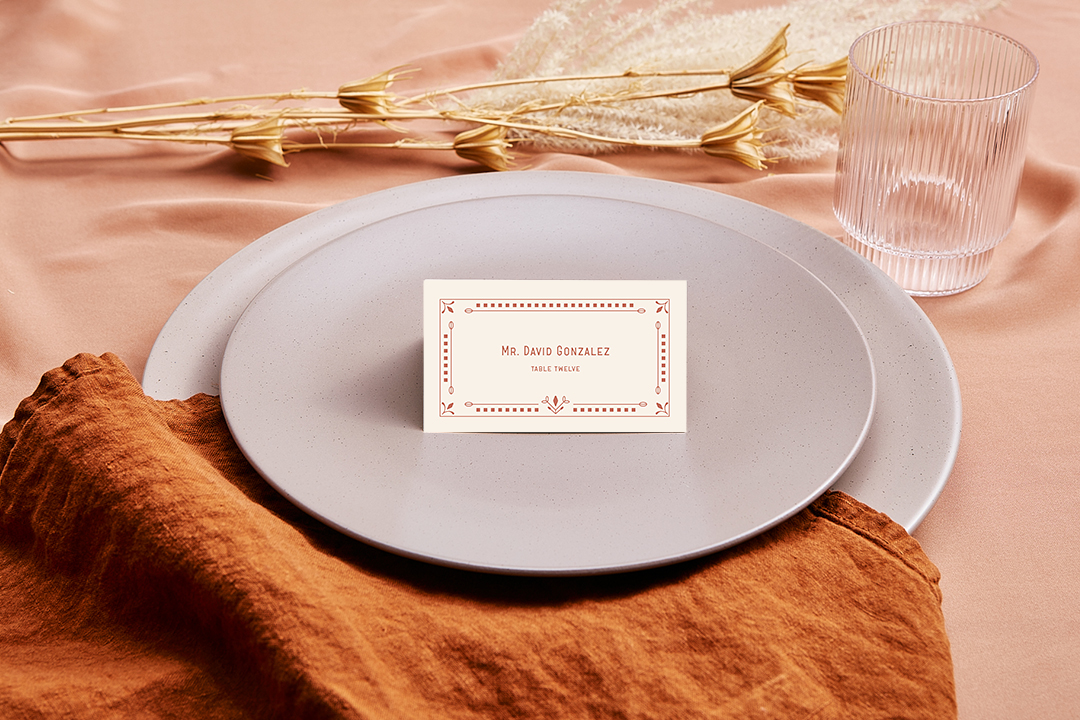
The First Look ✨
- A wedding place card is a piece of stationery that goes on the reception tables with guests’ names on them to let people know where they're sitting.
- Wait until your seating chart is set before diving into writing your place cards. Typically place cards are ordered a month or two before the wedding.
- Here’s a rundown of the best way to address your guests on their place cards.
Shop place cards
View allWhat's New: Table Numbers at Zola!
Shop Zola's latest addition to your full suite of day-of wedding paper— Table Numbers! Mix and match your favorite designs with your place cards, menus, and programs, and customize eveything from paper types, colors, fonts, shape, and style to create the ultimate personalized guest experience at your wedding reception.
Whether it's rustic, modern, or vintage, you can add a personal, diy touch to your wedding table, centerpieces, and table setting settings with unique wedding table numbers that stand out. Plus, Zola makes it easy to manage all your Day-of Paper, integrating details from your Guest List, RSPVs and Seating Chart seemlessly into your wedding planning process. Shop Zola's new table numbers today!
Wedding place cards are an incredibly important part of a wedding reception, not only for decor purposes, but also for organizational purposes. Not only can place cards serve a double purpose as favors, but they act as crowd control and a home base for your guests during the after-ceremony festivities. If you’re looking for information about writing your place cards—from how to address them to what font to use—you’re in the right place! We’re breaking down every single thing you need to know about wedding place cards so that you and your guests can celebrate stress-free.
Table of Contents:
Part 1: Wedding Place Cards 101
Part 2: Tips for Writing Your Wedding Place Cards
Part 3: Wedding Place Card Ideas
Part 1: Wedding Place Cards 101
Whether you’re here to learn the basics of wedding place cards or you just need a refresher, we’re outlining all the wedding place card details possible. No matter the size, formality, or venue, we’re here to help you make the best wedding place card decisions possible.
What Is a Wedding Place Card?
Traditionally, a wedding place card is a piece of stationery that goes on the reception tables with guests’ names on them to let people know where they're sitting. Typically, there's one place card at every reception seat. This card serves as a way to direct guests to their seats, plus it lets them know where they can expect dinner to be served and which seat they can relax in between busting some moves on the dance floor.
What’s the Purpose of a Wedding Place Card?
Place cards serve as a way to tell guests where to sit. While you might think just providing chairs is all you need, place cards can cut down on confusion and costs. They help ensure that you have the right number of seats so that you don’t pay for extra chairs, and they give your attendees a place to sit back and relax. Place cards can also help facilitate traffic for buffets, and separate any family or friends that need to keep their distance from each other.
Do I Need Wedding Place Cards?
Wedding place cards are always a good idea, no matter how elegant or casual your celebration is. Place cards can literally help you plan, as they help your guests feel at ease knowing where to sit and whom to sit by, plus they can even help your vendors when it comes to delivering food/beverages and directing traffic. In general, wedding place cards might be small in size, but they serve a big purpose that can help your celebration run smoothly.
So, why can’t you just allow your guests to choose their seats? People naturally spread out when doing so, which means that you’ll have random chairs in between groups that will cost more, and it might make it so that some people don’t have chairs. This could result in more open seats or lost meals, which can increase your final cost and create frustration. The only instance where you might really be able to skip place cards and seating charts is if you’re having a small celebration, such as in your backyard. Typically, if you’re having over 20 people—especially if you’re mixing groups or renting tables/chairs—a seating chart will come in handy.
That being said, as with everything wedding-related, it’s your day to make your own! While place cards are recommended to make your guests comfortable, help you plan, and manage the crowd, there’s no rule that says you have to have them.
Part 2: Tips for Writing Your Wedding Place Cards
As you’re getting ready to create your place cards, you might be at a loss for what goes on them, how to make them, and how to address your guests. Here’s everything you need to know about actually writing your place cards:
What Should I Write on My Wedding Place Card?
Before placing your order for your wedding place cards, it’s a good idea to not only have your seating chart organized and set, but also check with your vendors to see what information they need to be included on each place card. Sometimes vendors prefer you to include an indication of your guests’ meal choice (such as chicken, beef, or veggie) or any dietary restrictions, while other vendors will adapt with your creative vision. Here’s what you should consider including on your place cards:
- Guest’s name
- A title (if you use titles, ensure that you use them for each guest above the age of 18)
- A symbol or color indicating the guest’s meal preference
- The table number
When Should I Make My Wedding Place Cards?
Creating wedding place cards can be a time-consuming process, but you want to wait until your seating chart is set and you’ve received your RSVPs before diving into the process. This is so you can plan for table numbers, as well as not spend extra cash on cards for guests who RSVP their regrets. Ideally, you want to have your place cards completed about a month before your wedding date, so there’s a little wiggle room for any edits, additions, or replacements needed.
How Should I Address My Wedding Place Cards?
You now know place cards have your guests’ names on them, but you might be wondering how to address everyone. Here’s a rundown of the best way to address your guests on their place cards:
For Married Couples:
When addressing married couples, their last name with "Mr. and Mr.," "Mr. and Mrs.," or "Mrs. and Mrs.," preceding the surname is correct. If more than one couple shares the same last name, include the first name of the spouse whose surname they share, or include each person’s full name. You could also use each person’s full name without a title, especially for less formal celebrations. For married couples with different last names, feel free to either omit the title completely or write out each of their names in full with their respective titles.
For Unmarried Couples or Single Guests With Plus-Ones:
For unmarried couples, you’ll generally follow the same format as married couples with different last names, but instead of “Mrs.,” your female guests will be either Miss. or Ms. While you’ll want to follow the above rules for your invited guests, you might be wondering how to handle their plus-one’s place cards.
While you could address them as “Mr. X’s Guest,” consider asking for full names of guests with your RSVPs, or have a member of the wedding party reach out and get the name of plus-ones ahead of making your place cards, as it’s much more polite.
For Single Guests Without Plus-Ones:
The key with all of your place cards is to be consistent. If you’re titling any group, you must title them all, which is why many guests simply stick to full names when creating wedding place cards. For your friends flying solo, you can either opt for titling each guest or omitting the titles for single guests. Whatever you choose, be consistent (so don’t just address all the men by their names while the single women get Miss. in front of theirs).
For Children:
All single women can be addressed as “Miss,” but especially those under the age of 13. Additionally, boys under the age of 13 can be addressed as “Master.” That being said, even if you have titles for the rest of your guests, it’s always okay to omit titles for all children under the age of 18.
A Note About Pronouns:
Before deciding to use titles on your wedding place cards, it’s important to ensure that you’re 100 percent confident in all of your guests’ preferred pronouns. You could ask for them when collecting RSVPs, just as you would ask for meal preferences or dietary requests, or have friends reach out. Regardless, if you’re unsure of anyone’s pronouns, it’s best to omit titles for all of your guests. Don’t ever assume someone’s pronouns for the sake of a title.
Part 3: Wedding Place Card Ideas
As you’re narrowing down your place card options, Zola has options for every wedding preference, whether it’s formal, casual, vintage, or classic. The best part is, whatever option you choose can easily be matched to the rest of your paper suite. Check out some of our favorite options below:
Modern-Themed Place Cards
Think clean lines, marble backing, clean fonts, and textured paper when selecting place cards for your modern wedding. Here are a few modern options we adore:
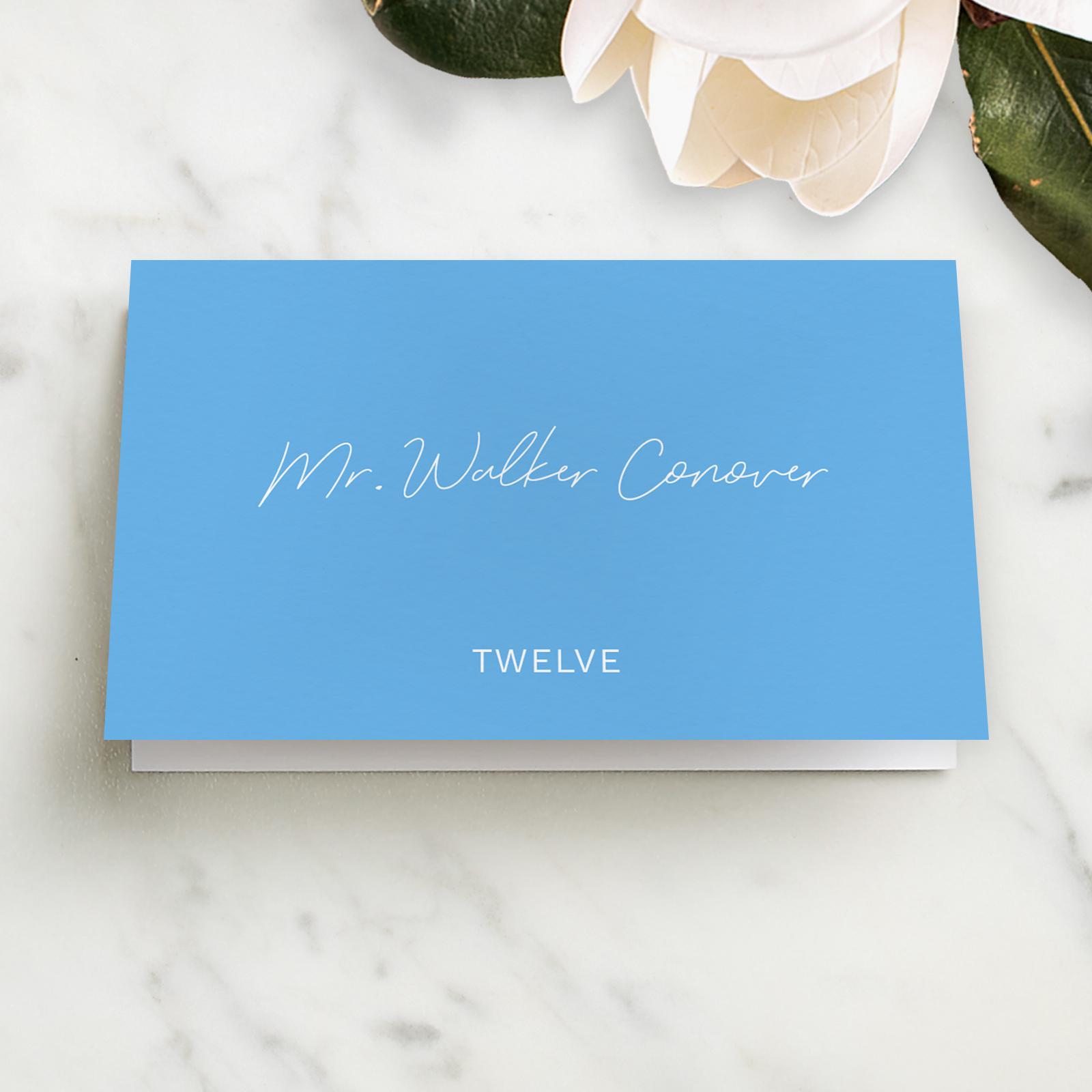
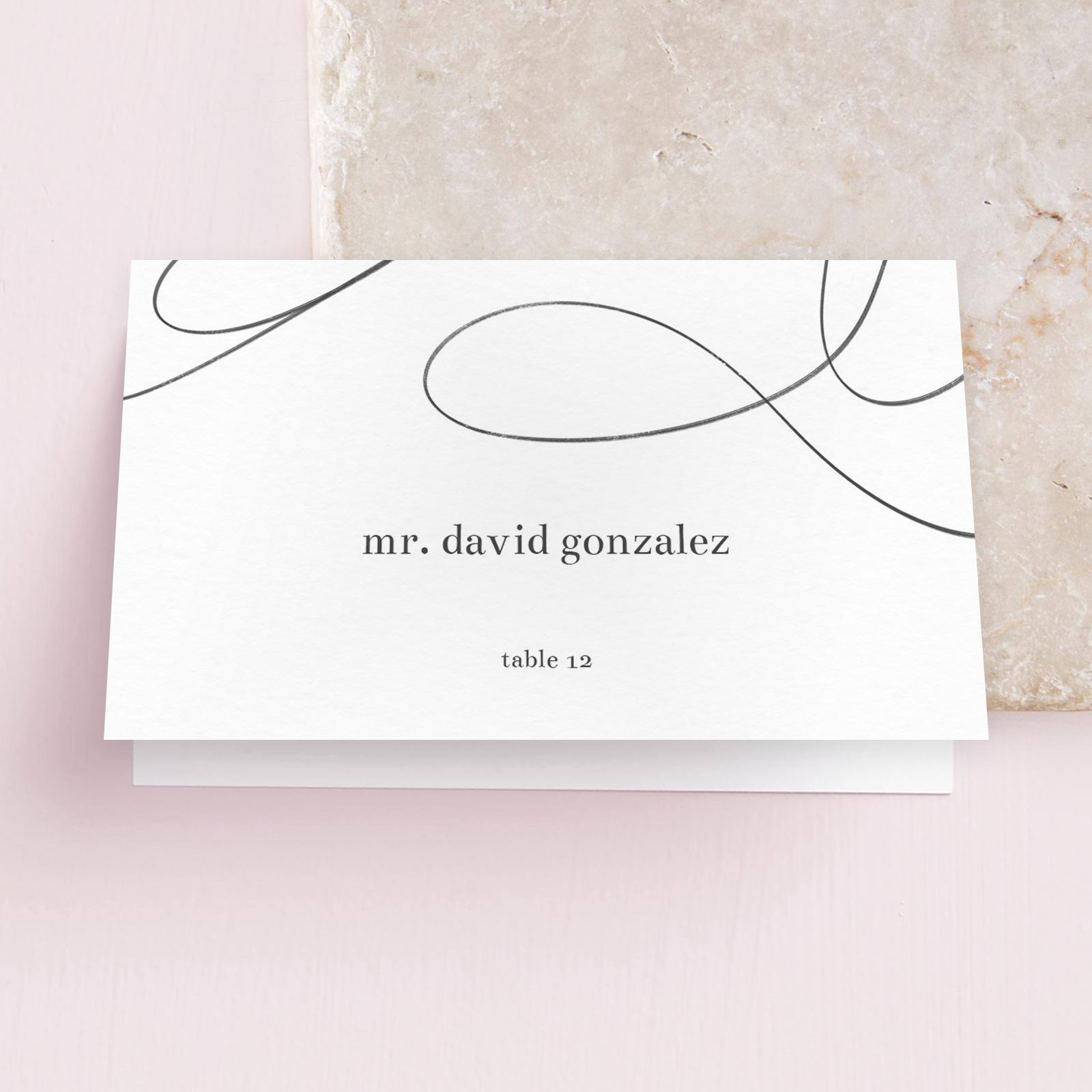
Formal-Themed Place Cards
A formal wedding provides the chance to lean into the drama, so don’t be afraid of fancy calligraphy, jewel tones, sparkles, and glamour when choosing your formal or vintage-themed cards.
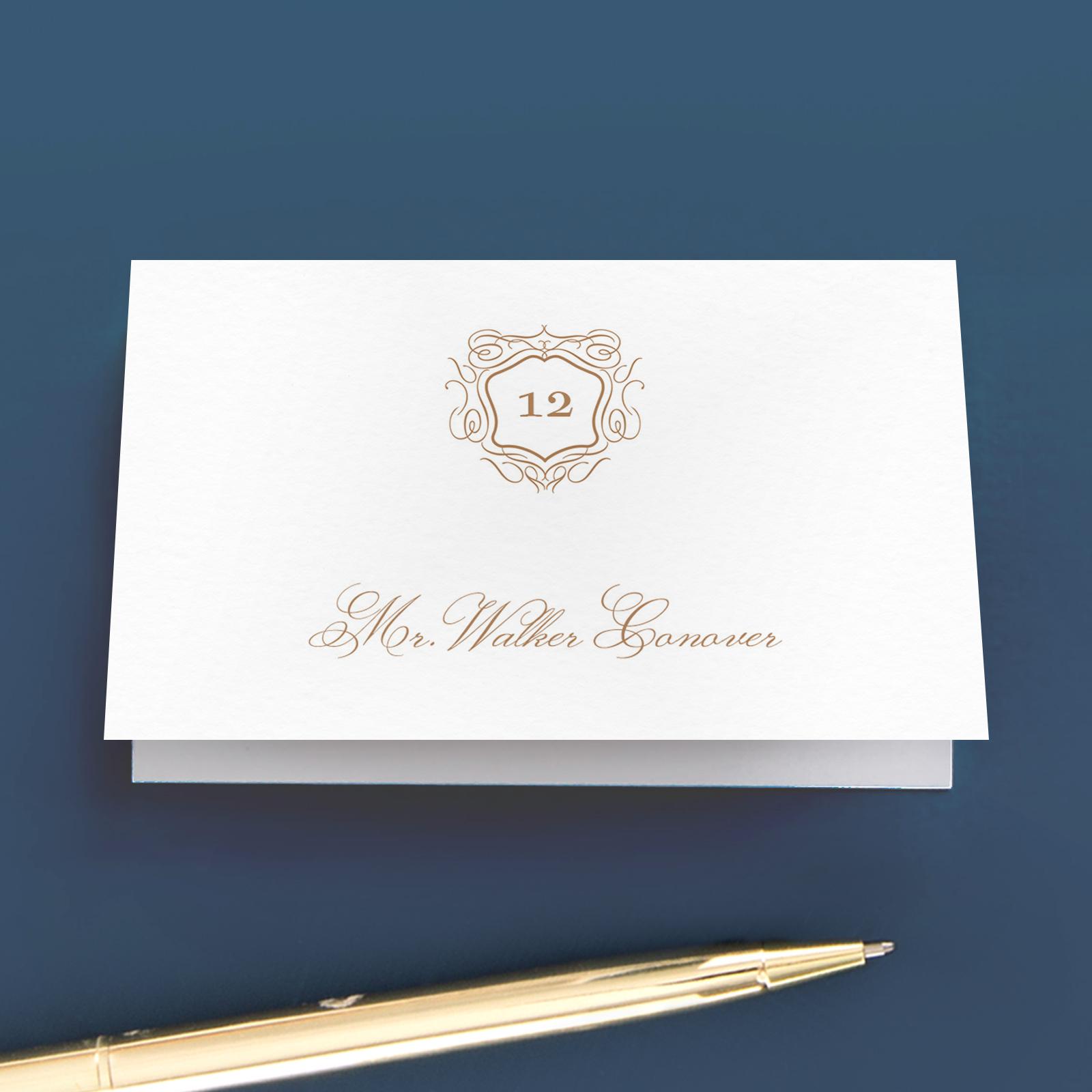
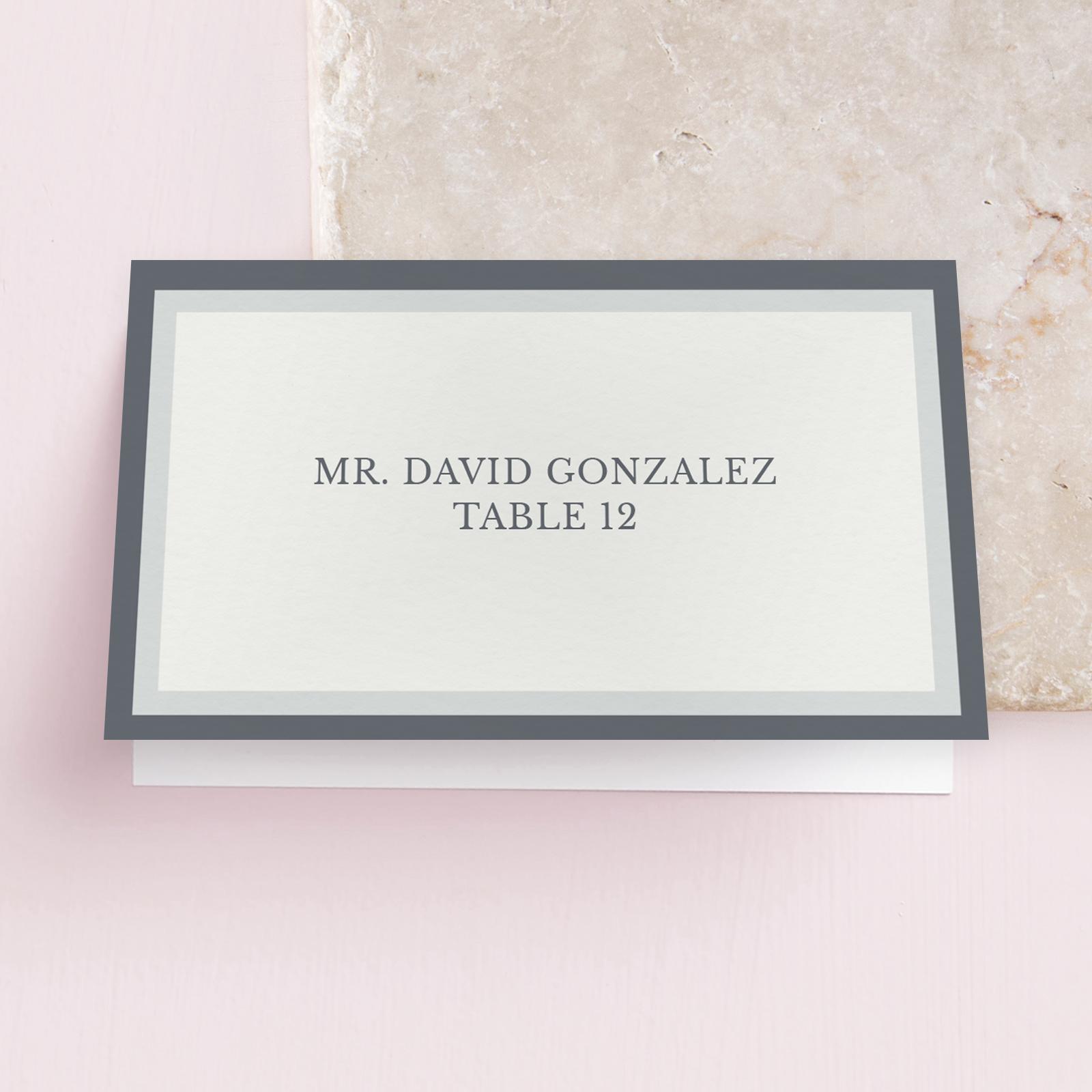
Place Cards for Outdoor Venues
Feel free to lean into the vibe of your outdoor venue for your place cards, but just make sure that they are sturdy enough so that they don’t blow away! It’s a good idea to consider using something other than paper for outdoor wedding place cards.
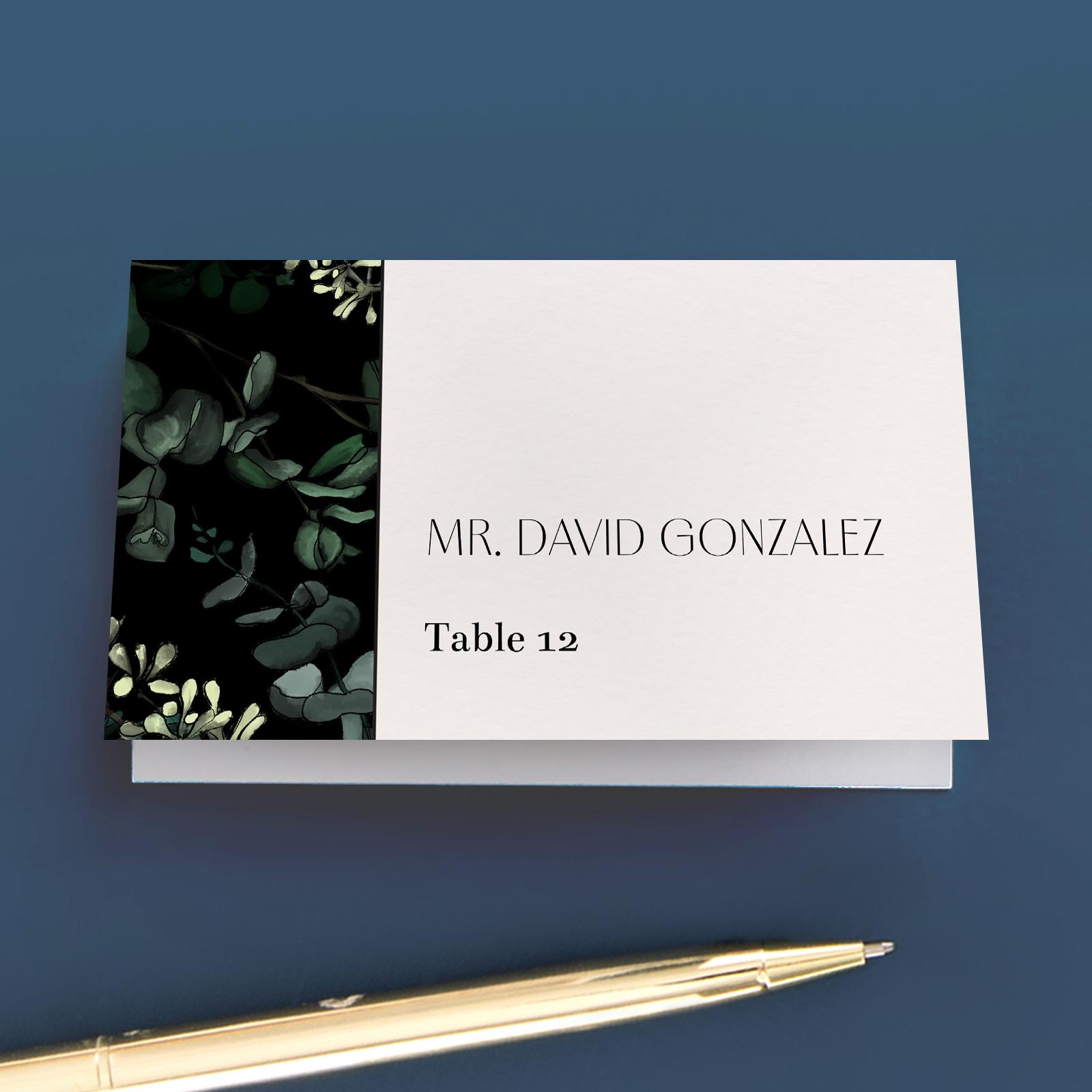
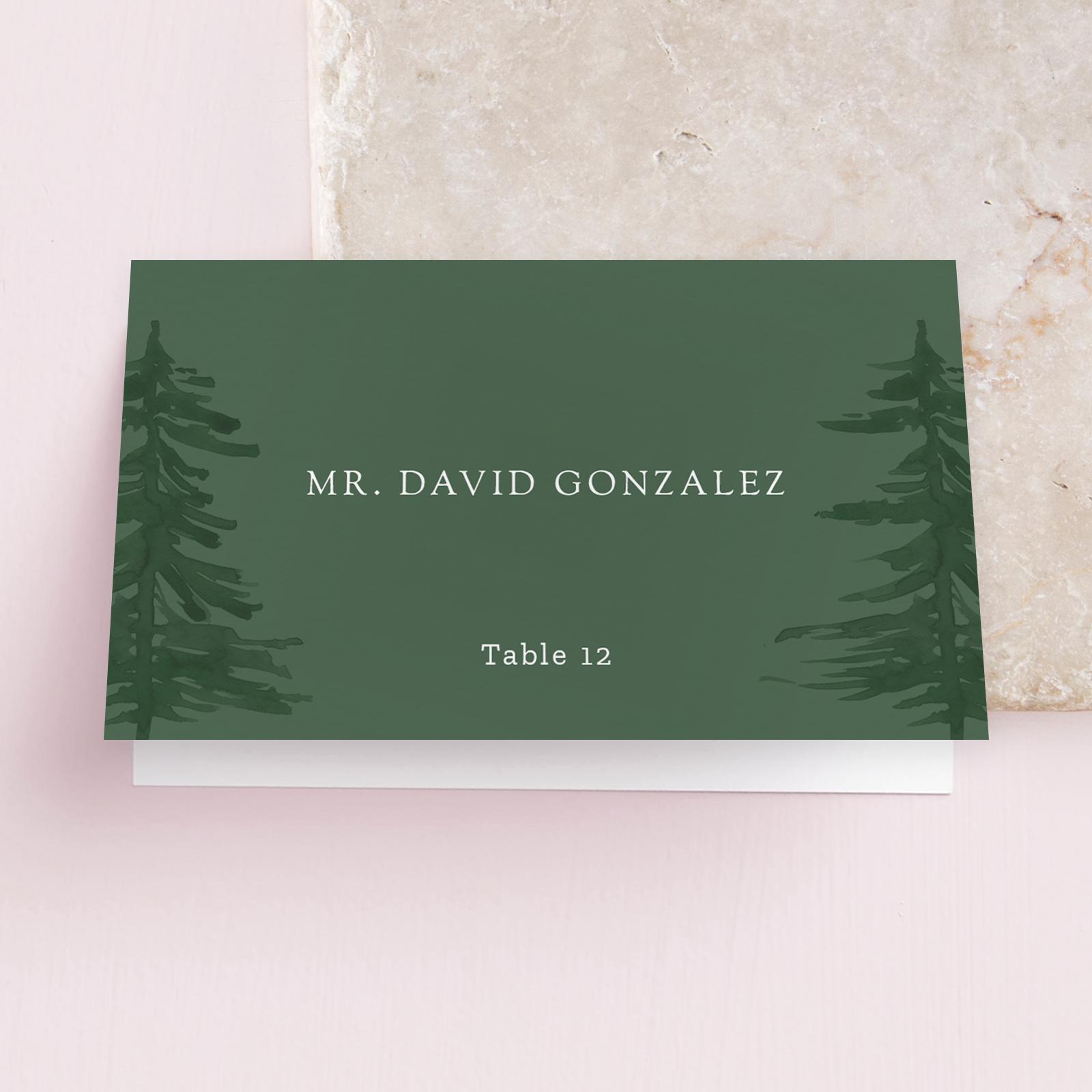
More About Making Wedding Place Cards
What’s the Difference Between Wedding Place Cards, Escort Cards, and a Seating Chart?
You might not have realized that there’s a difference between wedding place cards, escort cards, and a seating chart, but knowing how they differ is essential to know what tool(s) are best for your celebration.
Wedding place cards are placed on the table in front of each place setting so that guests know which seat is theirs. Escort cards, however, help guests know which table to go to when entering the reception venue. Wedding place cards simply feature the guest’s name (and sometimes food options) and they are already placed at the tables; whereas escort cards usually include the table number and are arranged on a table or display at the entrance of the reception.
A seating chart, as the name suggests, is a chart that outlines where everyone at your wedding will sit and be served dinner. This is a very important planning tool as it will determine the number of tables and chairs you need, as well as help the caterer serve meals and help you pair (or separate) different groups of people. A seating chart is like the overall seating map, while the place card is like a marker for a person. The escort card is a reflection of the seating chart, but is person-specific as opposed to an overview of the entire reception floor.
Do I Need a Wedding Seating Chart?
Most venues and celebrations use seating charts to stay organized. Unless you have a very small and casual event, a seating chart will both save you money and relax your guests. Additionally, some venues and caterers require a seating chart, so check with your pros before omitting the project. If you do plan to omit the chart, make sure that you have extra seating available and a plan in place so that all of your guests get served.
When to Order Your Place Cards
While you’ll want to ensure that you have plenty of time to receive your place card order, plus some wiggle room in case you need to reorder any, this isn’t a task that you can accomplish way in advance. However, it’s a good idea to order the cards as soon as your RSVPs and seating chart are confirmed, so that you have time to adjust, if needed. Typically, this happens about a month or two before the wedding, but you’ll want to hire your calligrapher, if you’re using one, at least four to six months before your big day, since they’ll need time to create all of the place cards and you’ll want to pad in some time to give any feedback or view corrections.
Where to Order Your Place Cards
Luckily, depending on your preferred style and budget, there are so many options when it comes to ordering place cards, and Zola is here to help no matter your vision or budget. Zola’s place card settings are not only of the highest quality and come with fast shipping, but they’re also easy to match and incorporate with the rest of Zola’s paper goods. As part of the “Day Of” suite, Zola’s place settings can be ordered to match your menus, invitations, thank you notes, and additional paper details.
With five different paper options—including smooth, eggshell, linen, pearlescent, and felt—as well as a huge variety of fonts and styles, there’s something for everyone. Additionally, with Zola’s one-time export, you can easily check everyone off of your guest list for printing place cards without stressing about missing anyone or spelling a name incorrectly.
Can I DIY My Wedding Place Cards?
While you can absolutely DIY your place cards, writing them by hand is not only tricky—even if you have artistic talent—but time-consuming too. If you’re considering making your own, do a few trials to see how much time and resources they take before committing to creating them all yourself. There are lots of resources out there that can teach you how to create stunning lettering, as well as offer lessons that you can take either online or in person.
What to Do After Receiving Your Place Cards
After placing and receiving—or finishing your DIYing—your place cards, keeping them clean and safe until it’s wedding time is vital. Store your wedding place cards in a cool, dry place where there’s no risk of them getting spilled on or messed up. Additionally, you’ll want to have a plan for how the place cards will get to the venue for the wedding, who will place them on the tables, and when they’ll be placed on the tables to avoid any confusion or in-the-moment scrambling. Chat with your planner or coordinator to make sure that you have a plan for not only creating the place cards but utilizing them too.
Where Should I Put My Wedding Place Cards and Wedding Escort Cards?
Wedding place cards go at the place setting where you’d like each guest to sit. Sometimes the cards are placed in holders and sometimes they’re placed on the actual setting. Either way, make sure that it’s clear which card goes to which seat to cut down on confusion.
If you’re assigned your guests’ specific seats at specific tables (or just specific tables where they can choose their own seats) escort cards are a must. These help get your guests from the entrance of the reception area to their seats. Place the escort cards in alphabetic order in an obvious place at the entrance of the reception area, such as a table in front of the reception hall. You’ll also want to ensure that your table numbers (which are usually on the center of each table) are visible so that your friends and family can easily find the table(s) they’re looking for.
Finally, if you decide to just have place cards (which are already placed at each setting) instead of escort cards, make sure to have a large diagram of some sort so that your guests can figure out which table to go toward. This can either be done by listing each table number and the names of the guests assigned to that table below, or by listing all the guests’ names in alphabetical order with each person’s table number written next to their names.
Zola: The One-Stop-Shop for All Your Wedding Place Card Needs
Whether you opt for simple place cards or options that double as decor, finding cohesive and cost-effective options for your paper goods is a game-changer, and that’s where Zola comes in. Not only can you simply select your favorite place cards from our site, but you can also coordinate all your other paper goods so that everything complements each other seamlessly. Plus, you can get everything printed at once to cut down on coordinating with multiple vendors and potential errors in spelling or consistency.
From creating the design to printing your place cards, let Zola do the work so that you can spend less time stressing and more time celebrating.
Up next for you
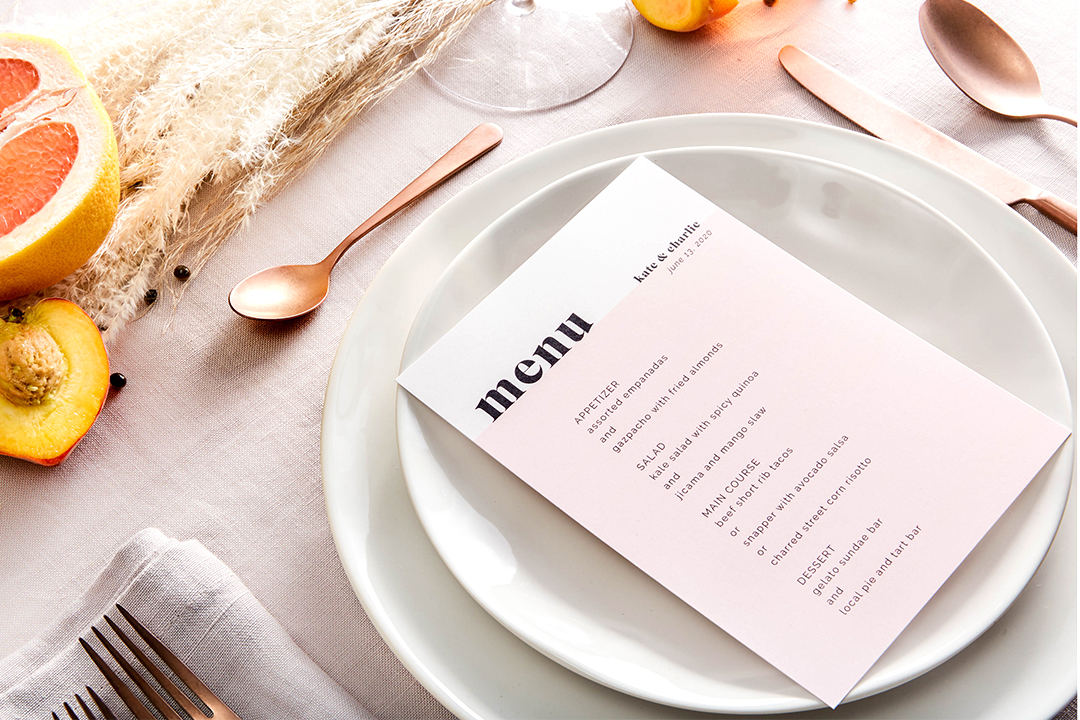
A Guide to Wedding Menu Cards
Inspiration
Discover everything there is to know about wedding menu cards in our guide.

A Guide to Escort Cards
How-To
Escort cards take the place of a well-heeled usher and guide your guests to their tables. This guide will break down how to use escort cards to the fullest.
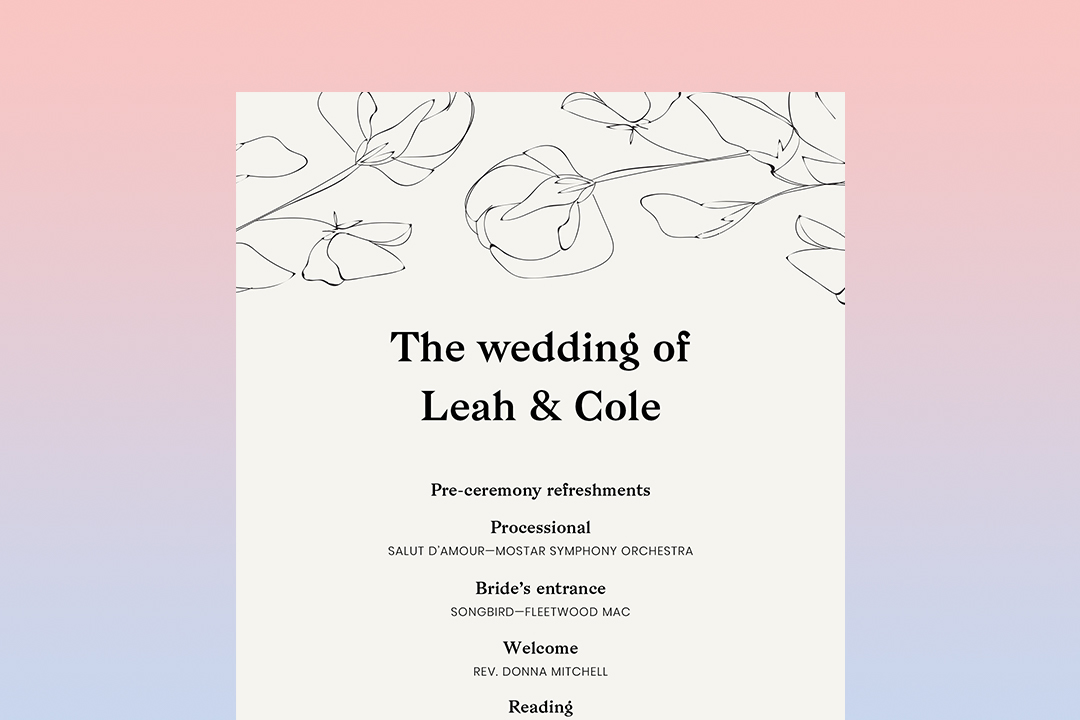
A Guide to Wedding Ceremony Programs
Inspiration
Wedding ceremony programs communicate valuable information to your guests about your ceremony service—find out all you need to know to choose, word, and personalize your wedding programs.
Featured

What Size Wedding Invitations Should I Buy?
How-To
Wondering how to add elegant touches to your wedding invitations? Zola has ideas that will wow your guests. Read on for elegant wedding invitation ideas.
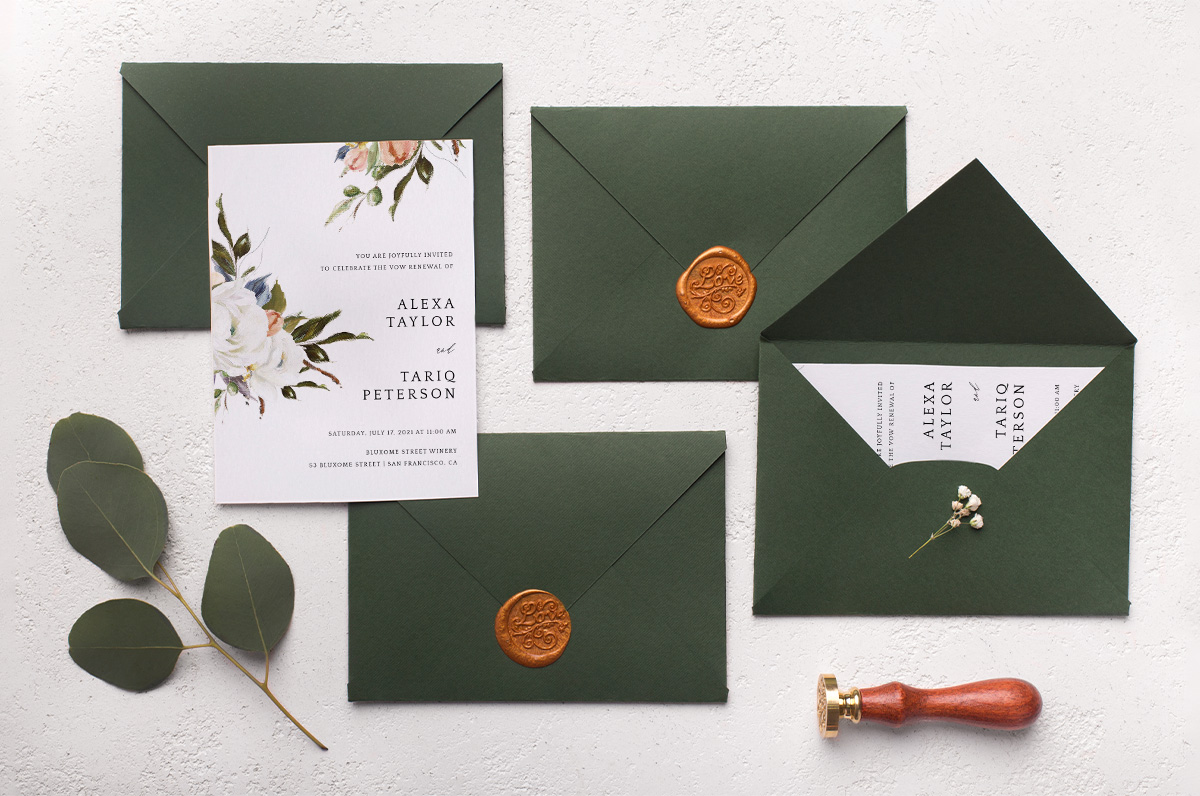
Guide to Wedding Invitation Wording
How-To
Your invitations set a first impression. In this guide, our experts lay out everything you need to know about wedding invitation wording and etiquette.
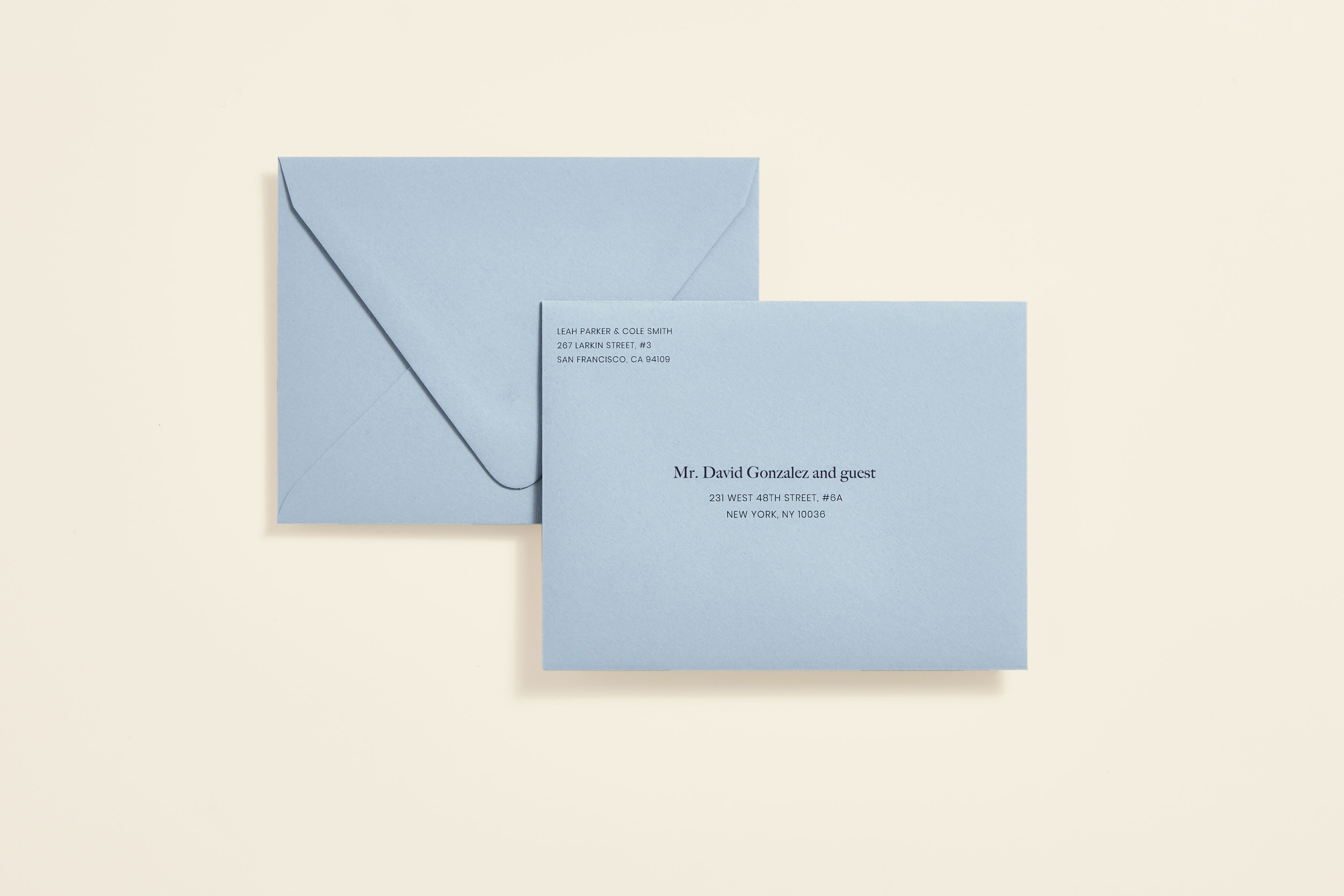
How to Address Wedding Invitations: Etiquette & Examples
How-To
Master the art of addressing wedding invitations with proper etiquette. Learn formal and modern approaches to create elegant and inviting cards.

How Much Do Wedding Invitations Cost on Average?
Inspiration
Average wedding invitation suite cost is $400-600; see how design and paper choices, suite add-ons, and guest count shape your spending and get planning tips to stay within budget.
- Expert advice/
- Invites & paper/
- Day-of paper/
- What to Write on Wedding Place Cards
Find even more wedding ideas, inspo, tips, and tricks
We’ve got wedding planning advice on everything from save the dates to wedding cakes.
